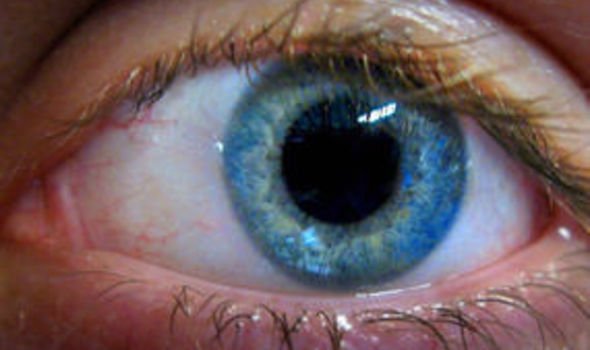 MILLIONS could be saved from incurable blindness by an injection of human stem cells.
MILLIONS could be saved from incurable blindness by an injection of human stem cells.The new and controversial treatment for blindness was hailed last night as “the holy grail” of research into the problem of age-related macular degeneration.
AMD is Britain’s leading cause of blindness, affecting 500,000 people in this country alone. It usually strikes after the age of 50 and about 90 per cent of cases are untreatable
Initially it causes blurred or distorted vision but worsens over time to cause total blindness.
Experts plan to start human trials of the treatment next year, using stem cells taken from spare embryos left over from IVF treatment. The procedure involves a single injection of cells directly into the retina.
Stem cells that are only a few days old can develop into any type of tissue in the body.
It is hoped they could repair damaged eyes.
But the operation will be controversial because many “pro-life” groups are opposed to using human embryos in any kind of medical research.
Scientists argue, however, that the benefits could revolutionise the treatment of many incurable conditions such as Parkinson’s disease.
Cathy Yelf, of the Macular Disease Society, said last night: “Obviously it is extremely interesting and we certainly welcome it very much indeed.
“It is in a way a holy grail because it would enable people to get the therapy that probably holds out most hope for people who have the disease.
"If people can regrow healthy retinal cells then that would be a wonderful thing.”
An American biotech company called Advanced Cell Technology is set to apply for a licence for the trials from the US authorities.
It is already hopeful that human trials using the same treatment for another form of eye disease, Stargardt’s macular degeneration, will begin by March.
This disease causes progressive damage to the central part of the retina, disrupting facial recognition and reading.
The company’s chief scientific officer, Dr Robert Lanza, said it plans to follow this trial with an application to the US Food and Drug Administration to treat AMD.
He said: “We hope to file a second application for age-related macular degeneration within the next few months. I think we’ve put together a pretty convincing case.”
AMD is caused when tissue at the back of the eye becomes clogged with natural waste products which block vital nutrients from passing into the retina.
This leads to the death of retinal cells and eventual blindness in one or both eyes. In “youthful” eyes, enzymes clear away this debris, but as the ageing process sets in, the body’s natural waste-disposal system becomes weak and unable to deal with its workload.
Some people are more at risk than others due to their age and family history, with women and smokers at greatest danger.
Currently there is no effective treatment for “dry” AMD, a less serious form of the disease.
Drugs like Avastin treat the more disabling and aggressive “wet” version but these usually do little more than stabilise the condition.
Barbara McLaughlan, of the Royal National Institute of Blind people, said: “RNIB very much welcomes research into treatments to prevent and possibly cure retinal diseases.
“It is exciting to see that we are getting to the stage when the use of stem cells can be trialled in humans
“A word of caution though. We do not know yet whether this approach will work in people with AMD.
“And if it does we do not know how long it will take for the treatment to become generally available to patients.” continues here
Back to Top







Post a comment on AAWR
0 Responses to "BLINDNESS CURE COULD SAVE SIGHT OF MILLIONS"Post a Comment
We welcome contributions from all sides of the debate, at AAWR comment is free, AAWR may edit and/or delete your comments if abusive, threatening, illegal or libellous according to our understanding of, no emails will be published. Your comments may be published on other nationalist media sites worldwide.